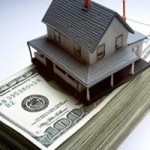Finding, Fixing, and Flipping Houses
 Finding, fixing, and flipping houses has become a popular topic for reality shows and inspires beginning investors to give it a try. Buying a property in need of a renovation at a wholesale price, fixing it up and then selling it at a profit remains one of the most profitable activities for a real estate investor. The promise of quick profits and a great return on investment is a strong incentive.
Finding, fixing, and flipping houses has become a popular topic for reality shows and inspires beginning investors to give it a try. Buying a property in need of a renovation at a wholesale price, fixing it up and then selling it at a profit remains one of the most profitable activities for a real estate investor. The promise of quick profits and a great return on investment is a strong incentive.
While it’s attractive, this is not an easy strategy, and it takes some hard work, financial savvy, and know how about the process of renovating a house. Here are some tips that can make your first flip a profitable one:
- Have a budget for repairs and a realistic idea of what repairs and renovations are needed. When you first view a property, take more than a flashlight. Take a clipboard or IPad, to make notes. Take pictures if allowed. That first walk through is your opportunity to gauge what will be needed. How many windows? New floor or carpeting? Completre kitchen remodel or surface renovations on cabinets and drawers? Plumbing and electrical issues? Appliances? Roof? Gutters? Use the first walkthrough to gauge how much you will spend on repairs and upgrades.
- Know your target market. You don’t want to get carried away and over improve for the area. Do you need to restore or replace hardwood floors, or would laminate be a better choice? What brands of appliances are suitable for this market? Likewise, you don’t want to under improve a property in an attractive neighborhood – you want to restore the house to what potential buyers expect to find in the area.
- Work with a reliable contractor. It’s tempting to want to do all the work yourself if you have construction or handyman skills, but this can lead to unforeseen expenses, additional work, and you probably won’t have as good a result. There could also be liability issues. Have a plan for what needs to be done and what it will cost.
- Have a sufficient cash reserve. This could be a potential $50,000 profit, but in the interim, you need to pay your own bills and those of the property. Taxes, mortgage, supplies, workers all need to be paid. Many first time investors maintain their day job and identify where cash will come from for the rehab and for emergencies.
- Have an exit strategy. Despite your best efforts and preparation, the property may not sell for reasons beyond your control. Decide if you will hold the property and rent it out, or if you will cash out for a lower price.
- Don’t overpay for the property. Do your calculations ahead of time. You are in this to make a profit. Most investors have a formula for calculating what they will pay for distressed property. Typically they figure what comparable properties in good repair have sold for, and then deduct their costs for construction, taxes, financing, marketing, and their profit. The result is the price they can offer for the property.